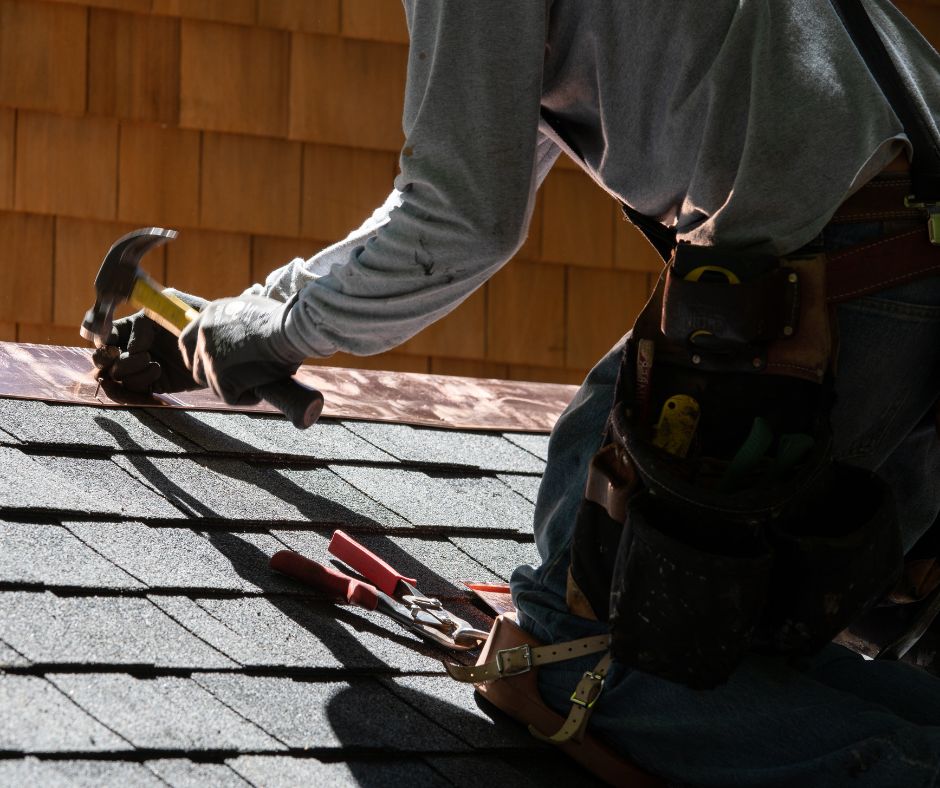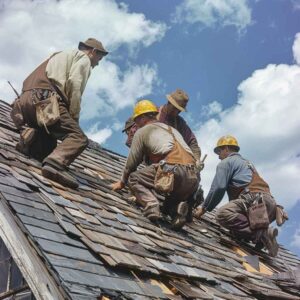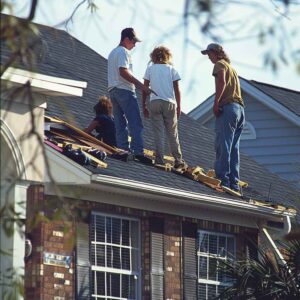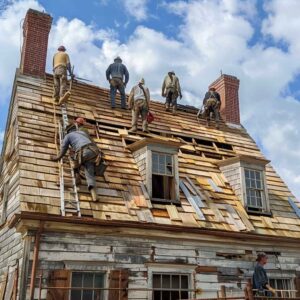As experienced roofers in Gap, PA, we’re here to shed light on the importance of flashing in roofing. You’ve come to the right place if you’re wondering what flashing is and why it matters.
Flashing plays a vital role in shielding your roof from water damage and preventing leaks.
In this article, we’ll explore the different types of flashing materials, common areas where it’s installed, and signs of flashing problems to watch out for.
Plus, we’ll share some valuable tips for maintaining and repairing flashing. Let’s dive in!
Importance of Flashing in Roofing
In our experience, flashing plays a crucial role in ensuring a roofing system’s long-term durability and effectiveness.
Professional installation of flashing offers several benefits. Firstly, it guarantees proper placement and alignment, ensuring a tight seal against water infiltration. This is essential in preventing leaks and water damage.
Moreover, expert installation guarantees secure fastening of flashing, minimizing the risk of it loosening or dislodging in adverse weather conditions. Speaking of weather conditions, they can significantly impact the lifespan of flashing.
Extreme temperatures, heavy rains, and strong winds can all contribute to the deterioration of flashing materials over time.
Professional installation, combined with high-quality materials, can help prolong the lifespan of flashing, protecting your roof and property from costly repairs. It’s crucial to have a professional assess and install your flashing to maximize its effectiveness and longevity.
Different Types of Flashing Materials
Now, let’s dive into the various types of flashing materials that are commonly used in roofing.
For durable protection against water penetration and leaks, selecting an appropriate material is vital in flashing installation techniques.
Here are three types of flashing materials that are commonly used:
– Aluminum: This lightweight and corrosion-resistant material is famous for its durability and ease of installation. It is an excellent choice for areas with high moisture or corrosive environments.
– Copper: Copper flashing, prized for both its longevity and aesthetic charm, is frequently employed in historic or upscale projects. It is highly malleable, making it easy to form and bend into complex shapes.
– PVC: This synthetic material is preferred for its affordability and flexibility. PVC flashing is resistant to weathering and UV radiation, making it suitable for various roofing applications.
High-quality flashing materials offer several benefits, including enhanced durability, improved water resistance, and prolonged roof lifespan. Investing in superior materials ensures a reliable and long-lasting roofing system.
Common Areas Where Flashing Is Installed
As we continue exploring flashing in roofing, let’s delve into the common areas where flashing is typically installed. Flashing installation techniques play a crucial role in ensuring the longevity and effectiveness of a roof.
Proper flashing installation provides several benefits, including preventing water leakage, protecting against wind damage, and enhancing the overall durability of the roof.
Flashing is commonly installed in areas where two roof planes intersect, such as valleys, ridges, and hips. It is also installed around chimneys, skylights, vents, and dormers.
Additionally, flashing seals any gaps between the roof and vertical structures, such as walls or parapets.
Careful attention to flashing installation in these areas is essential to maintain the roofing system’s integrity and prevent potential issues down the line.
Signs of Flashing Problems in a Roof
We have observed several signs that may indicate potential flashing problems in a roof. Do not overlook these signs; if ignored, they may escalate into more severe issues.
Here are some key signs to look out for:
– Leaks: Water stains or moisture on the ceiling or walls can indicate a flashing problem.
– Rust or corrosion: If you notice rust or corrosion on your flashing, it may be a sign of damage that needs immediate attention.
– Loose or missing flashing: Swiftly repair or replace any loose or missing flashing to avert water penetration.
Tips for Maintaining and Repairing Flashing
How can we effectively maintain and repair flashing in roofing? Proper maintenance and repair of flashing is crucial to ensure the integrity and longevity of a roofing system.
Regular inspections should be conducted to identify any signs of damage or deterioration. Any cracks, gaps, or loose sections should be repaired immediately to prevent water penetration.
When repairing flashing, the process typically involves removing and replacing the damaged section with new flashing material. Following the flashing installation process is vital to ensure a proper and watertight seal.
Additionally, choosing the right flashing material is essential. Factors to consider include the climate, type of roofing material, and the specific location of the flashing.
By following these tips, you can effectively maintain and repair flashing in roofing, protecting your home from water damage.





